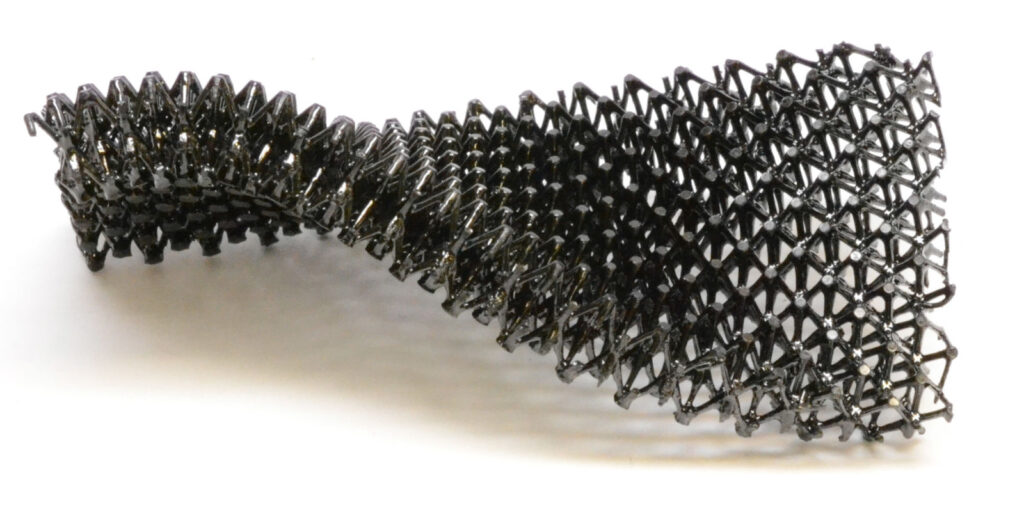3D printing is hitting new heights in 2025, and it’s all thanks to advanced 3D printing materials that are pushing the technology beyond basic plastics. From high-performance polymers to cutting-edge metal alloys and even shape-shifting 4D materials, this year is a turning point for both hobbyists and industry pros. Why does this matter? Because these materials are bridging the gap between fun DIY projects and serious industrial applications, offering strength, durability, and innovation like never before. With the 3D printing market growing at a 23.5% CAGR (per Grand View Research), materials are the driving force. In this article, we’ll explore five game-changing materials for 2025, breaking down what they are, how they work, and why they’re worth your attention. Whether you’re printing a drone part or a medical implant, here’s what you need to know to stay ahead in the 3D printing world!
What Are Advanced 3D Printing Materials?
Advanced 3D printing materials go beyond the PLA and ABS of yesteryear—they’re engineered for performance, sustainability, and versatility. In 2025, they’re transforming industries like aerospace, healthcare, and automotive, while still being accessible to enthusiasts with the right tools. Think titanium alloys for rocket engines or bio-based filaments for eco-friendly decor. This list-style guide will walk you through the top materials shaping the year, packed with examples and insights to spark your next project.
1. Metal Alloys: Powering Precision and Strength
Why Metal Alloys Matter in 2025
Metal 3D printing is booming, with alloys like titanium, stainless steel, and Inconel leading the charge. These high-strength 3D printing materials are perfect for parts that need to withstand extreme conditions—think aerospace or automotive components. A 2025 Additive Manufacturing Research report notes a 30% increase in metal printing adoption since 2023, driven by faster printers and lower costs.
Real-World Uses
SpaceX’s Raptor engines, updated in March 2025, use 3D-printed titanium alloy components, cutting production time by 40% compared to traditional casting. Meanwhile, small businesses are printing stainless steel jigs for under $100 via services like Xometry.
What’s New
New techniques like Binder Jetting are making metal printing more affordable, with print speeds hitting 120 cm³/hour—double that of 2023 models.
2. Carbon-Fiber Composites: Lightweight Durability
The Rise of Composites
Carbon-fiber-reinforced nylon and other composite 3D printing materials are stealing the spotlight in 2025 for their strength-to-weight ratio. They’re ideal for anyone needing durable yet lightweight parts, from hobbyist drone builders to automotive engineers.
Practical Examples
Ford’s 2025 F-150 refresh includes 3D-printed composite brackets, reducing weight by 15% and boosting fuel efficiency. Hobbyists are using these filaments (e.g., MatterHackers’ NylonX) to craft crash-resistant quadcopter frames.
2025 Trends
Filament prices have dropped 20% since 2024, and new printers like the Bambu Lab X1 Carbon handle composites with ease, making them more accessible than ever.
3. High-Performance Polymers: Extreme Conditions, No Sweat
What Sets Them Apart
Polymers like PEEK and PEI (Ultem) are high-performance 3D printing materials built for heat, chemical resistance, and toughness. In 2025, they’re a go-to for functional parts in demanding environments, appealing to pros and advanced hobbyists alike.
Where They Shine
Aerospace firm GKN uses PEEK for engine components that endure 300°C+, while hospitals print PEI sterilization trays—both reported in industry updates. These materials are also popping up in DIY wearables that need durability.
Latest Developments
Recyclable versions of PEEK debuted in January 2025, cutting costs by 15% and aligning with sustainability goals, per 3D Printing Industry.
4. Bio-Based Filaments: Printing Green in 2025
The Eco-Friendly Shift
Sustainability is huge in 2025, and eco-friendly 3D printing materials like bio-based filaments (e.g., PLA from corn, hemp-based blends) are leading the charge. They reduce environmental impact while maintaining solid performance, perfect for eco-conscious creators.
Real-World Impact
IKEA’s 2025 pilot program uses hemp-PLA for furniture fittings, slashing emissions by 12% per part. Small Etsy shops are also jumping in, printing biodegradable planters that sell like hotcakes.
What’s Fresh
Stratasys rolled out a bio-resin in February 2025, boasting a 95% waste reduction over traditional resins—ideal for green manufacturing enthusiasts.
5. 4D Printing Materials: The Future Is Here
Understanding 4D Innovation
Advanced 3D printing materials include 4D materials—smart substances that change shape or function over time (e.g., with heat or water). This cutting-edge tech is gaining traction for its futuristic potential, exciting both innovators and curious hobbyists.
Cutting-Edge Examples
NASA’s 2025 adaptive wing project uses 4D-printed polymers that adjust mid-flight, improving fuel efficiency by 8%. On a smaller scale, hobbyists are experimenting with shape-memory PLA for self-assembling models.
2025 Outlook
Affordable 4D filaments hit the market early this year (e.g., Polymaker’s offerings), bringing this tech to desktop printers for under $50 a spool.
How to Get Started with These Materials
- Printer Compatibility: Metals need industrial setups (e.g., Markforged), while composites and polymers work with prosumer models like the Prusa i3 MK4.
- Cost Considerations: Bio-based PLA starts at $20/kg, while PEEK can hit $100/kg—plan your budget!
- Learning Curve: Start with composites on a desktop printer, then explore 4D with tutorials from All3DP.
For deeper dives, check 3D Printing Industry’s 2025 Material Report or Additive Manufacturing Research.
Conclusion
In 2025, advanced 3D printing materials 2025—from metal alloys to 4D polymers—are opening new doors for creators and industries alike. Whether you’re chasing strength with composites, sustainability with bio-based filaments, or innovation with 4D tech, these materials offer endless possibilities. With real-world wins like SpaceX’s engines and IKEA’s fittings, they’re not just trends—they’re the future. What will you print with these high-performance 3D printing materials this year?

